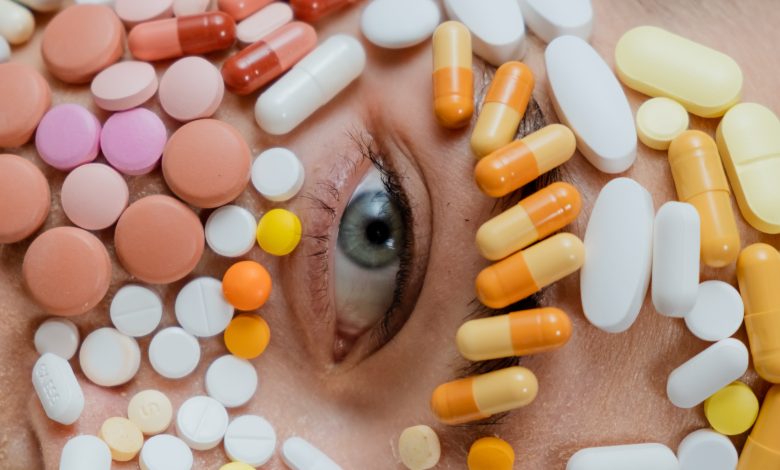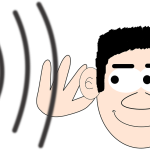List Of Prescription Drugs That Cause Skin Picking

Prescription drugs play a vital role in managing various medical conditions, providing relief, and improving the quality of life for countless individuals. However, it is important to recognize that certain medications can have unintended side effects. In some cases, prescription drugs have been associated with the development or exacerbation of compulsive behaviors, such as skin picking.
This article aims to provide a comprehensive overview of prescription drugs that have been linked to skin picking and explore the underlying mechanisms behind this phenomenon.
Understanding Skin Picking
Skin picking, also known as dermatillomania or excoriation disorder, is a condition characterized by recurrent and compulsive picking, scratching, or digging at the skin, resulting in tissue damage. It is classified as an impulse control disorder and often leads to physical injuries, emotional distress, and impaired functioning in daily life. Skin picking is typically triggered by anxiety, boredom, or other negative emotions, and individuals affected by this disorder may struggle to resist the urge to engage in the behavior.
List Of Prescription Drugs That May Contribute to Skin Picking
Examples of prescription drugs that can cause skin picking include:
1. Psychostimulants: Psychostimulant medications, such as amphetamines and methylphenidate, are commonly prescribed for attention-deficit hyperactivity disorder (ADHD). While these drugs are highly effective in managing ADHD symptoms, they can occasionally contribute to the development or exacerbation of skin picking behaviors. The precise mechanisms underlying this relationship are not yet fully understood, but it is believed that increased arousal and heightened dopamine levels may play a role. While psychostimulant medications like methylphenidate (Ritalin, Concerta) and amphetamine salts (Adderall) are commonly prescribed for ADHD, reports of skin picking as a side effect are relatively rare. However, there have been anecdotal accounts of individuals experiencing an increase in compulsive behaviors, including skin picking, while taking these medications.
2. Selective Serotonin Reuptake Inhibitors (SSRIs): SSRIs are a class of antidepressant medications frequently prescribed for depression, anxiety disorders, and other mental health conditions. Although SSRIs are generally well-tolerated, they have been associated with an increased risk of skin picking in some individuals. The modulation of serotonin levels in the brain, which is the primary mechanism of action for SSRIs, may influence compulsive behaviors, including skin picking.
Examples of SSRIs that have been associated with skin picking include fluoxetine (Prozac), sertraline (Zoloft), citalopram (Celexa), escitalopram (Lexapro), and paroxetine (Paxil). However, it is important to note that these reports are anecdotal and not widely recognized as established side effects of SSRIs.
3. Antipsychotic Medications: Antipsychotic drugs, used to treat schizophrenia, bipolar disorder, and other psychotic disorders, can occasionally contribute to the development of skin picking behaviors. While the underlying mechanisms are not yet fully understood, the influence of dopamine receptor blockade and altered neurotransmitter levels may be implicated in this relationship. Examples of antipsychotic medications that have been associated with skin picking include risperidone (Risperdal), olanzapine (Zyprexa), quetiapine (Seroquel), and aripiprazole (Abilify).
4. Anti-anxiety Medications: Benzodiazepines and other anti-anxiety medications are commonly prescribed to alleviate symptoms of anxiety and panic disorders. Although skin picking is not a widely reported side effect of these drugs, in some cases, these medications may contribute to an increase in compulsive behaviors, including skin picking. Further research is needed to establish a clearer understanding of the connection between anti-anxiety medications and skin picking.
Examples of anti-anxiety medications that have been associated with such reports include alprazolam (Xanax), lorazepam (Ativan), diazepam (Valium), and clonazepam (Klonopin). However, it is important to note that the occurrence of skin picking as a side effect of anti-anxiety medications is not well-documented or established, and individual responses may vary.
5. Opioids: Opioid medications are potent analgesics often prescribed for the management of acute and chronic pain. While the primary concern with opioids is their potential for addiction and abuse, there have been reports linking these drugs to skin picking behavior. It is hypothesized that the euphoric effects of opioids and their impact on the reward center of the brain may contribute to the development of compulsive behaviors, including skin picking. Examples of opioid medications that have been associated with such reports include oxycodone (OxyContin), hydrocodone (Vicodin), codeine, and morphine.
Mechanisms and Risk Factors
The precise mechanisms by which these prescription drugs contribute to skin picking remain largely unknown. However, several factors may increase the likelihood of developing or exacerbating skin picking behaviors, including individual susceptibility, underlying psychiatric conditions, genetic predisposition, and dosage and duration of drug use. Additionally, the complex interplay between neurotransmitters, such as dopamine and serotonin, and the brain regions involved in impulse control and reward processing likely contributes to the manifestation of skin picking.
How to Cope With Prescription Drug Induced Skin Picking
Coping with prescription drug-induced skin picking requires a comprehensive approach that involves both self-help strategies and professional guidance. Here are some coping strategies to consider:
1. Consult with a healthcare professional: Discuss your concerns with the prescribing physician or a mental health professional. They can evaluate the medication’s potential contribution to skin picking and explore alternative treatment options or adjustments to the dosage if necessary.
2. Psychotherapy: Seek therapy from a qualified mental health professional experienced in treating impulse control disorders. Cognitive-behavioral therapy (CBT) and habit reversal training (HRT) can help identify triggers, develop coping mechanisms, and modify behavior patterns associated with skin picking.
3. Medication adjustments: With professional guidance, consider adjusting the dosage or switching to a different medication that may be less likely to contribute to skin picking behaviors. Never modify or discontinue medication without consulting a healthcare professional.
4. Stress and anxiety management: Practice stress reduction techniques, such as deep breathing exercises, meditation, yoga, or engaging in activities that promote relaxation. Managing anxiety and stress levels can help reduce the urge to engage in skin picking behaviors.
5. Distraction techniques: Find alternative activities to redirect your focus and keep your hands occupied, such as squeezing a stress ball, playing with fidget toys, or engaging in hobbies that require manual dexterity.
6. Skin care regimen: Establish a consistent skincare routine to promote healing and reduce the likelihood of skin picking. This may include gentle cleansing, moisturizing, and using protective barriers such as bandages or gloves to prevent access to areas prone to picking.
7. Support groups: Seek out support groups or online communities where you can connect with others who are experiencing similar challenges. Sharing experiences and strategies can provide valuable insights and emotional support.
8. Self-awareness and mindfulness: Develop self-awareness of triggers and the emotions associated with skin picking. Practice mindfulness techniques to observe the urge without judgment and learn to tolerate discomfort without engaging in the behavior.
9. Healthy lifestyle habits: Prioritize healthy habits such as regular exercise, adequate sleep, a balanced diet, and avoiding substances that may exacerbate compulsive behaviors.
10. Patience and self-compassion: Recovery from skin picking can be a gradual process. Be patient with yourself, acknowledge setbacks without self-blame, and practice self-compassion. Celebrate small victories and seek professional support when needed.
Remember, it is essential to work closely with healthcare professionals to develop an individualized approach that addresses your specific needs and circumstances. They can provide personalized guidance and support throughout your journey to cope with prescription drug-induced skin picking.
Conclusion
Skin picking is a complex condition influenced by various factors, including genetic, psychological, and environmental elements. While prescription drugs have undoubtedly revolutionized medical treatment, it is important to recognize that some medications can potentially contribute to the development or exacerbation of skin picking behaviors. If you are experiencing skin picking tendencies while taking prescription drugs, it is crucial to consult with a healthcare professional who can provide guidance, adjust medication dosage if necessary, and explore alternative treatment options to manage both the underlying condition and the skin picking behavior.





